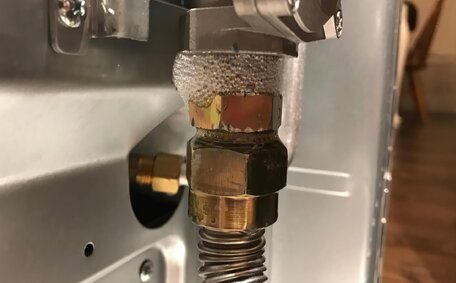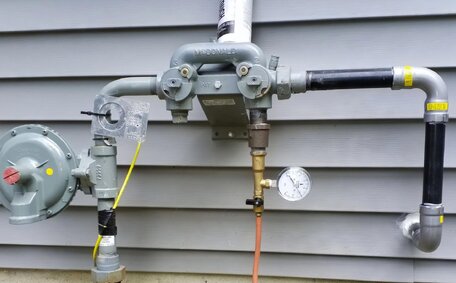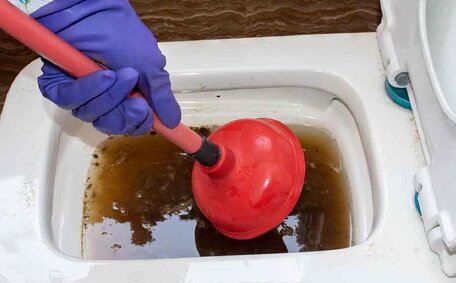Introduction to Natural Gas: Sources, Composition and Applications
Natural gas, along with types like LPG (liquefied petroleum gas), originates from deep underground, formed from decomposing plant and animal matter. Composed primarily of methane, natural gas is inherently odourless and colourless. For safety, it is laced with mercaptan to emit a "rotten egg" smell, facilitating leak detection.
Natural gas is sourced from underground reservoirs or as a product of decomposed organic matter like coal. Natural gas combustion as a domestic fuel is cleaner, emitting lower carbon dioxide than other fossil fuels. Yet, handling unburned natural gas demands strict safety due to its potential environmental impact, including contributions to climate change.
Used in home appliances, natural gas facilitates critical functions in residential and industrial environments. Natural gas is essential for common activities, including cooking, home heating, electricity generation, and transportation. Key household uses for natural gas include:
- Gas stoves and ovens, particularly ensuring pilot lights function correctly
- Gas hot water systems
- Gas heaters for pools and spaces
- Gas-fired power plants
Safe handling of natural gas is crucial for carrying out gas-related household tasks without risk. Consumers should follow natural gas safety guidelines to be informed about risks, leak detection, and emergency response actions.
Recognizing Natural Gas Leaks
Rapid detection of gas leaks in your vicinity is essential. Be alert and know how to identify a gas leak by listening for specific sounds and smelling for distinct odours:
- A distinctive rotten egg smell, which signals a natural gas presence and serves as a telltale sign of its leakage. This scent is added to natural gas to help detect leaks, so if you still smell gas there might be a leakage.
- An unusual hissing, whistling or roaring sound coming from gas appliances or pipes.
- Dirt spraying from pipes, dead plants around gas lines, or continuous bubbling in pools or ponds near gas equipment.
- A discoloured gas flame or flames unexpectedly emerging from the ground are apparent warning signs.
- Unusually high consumption on gas bills without explanation which can signify a hidden issue.
Upon detecting a gas leak, promptly turn off the main gas supply, assess the safest evacuation path, clear the building, and call emergency services. Do not use phones, lights, or do turn off any devices that could ignite a spark. Turn off gas supply, call 000 once outside, then call your Kenthurst Plumbing on 1300 349 338 or your utility provider from a safe location.
Even minor gas leaks pose serious hazards and must be addressed by licensed professionals observing health and safety protocols. Do not attempt repairs yourself.
Dangers of Gas Leaks
Remain vigilant about gas leaks, as they underline the inherent risks associated with natural gas. Gas leaks can compromise your well-being, so taking steps to ensure your safety is paramount:
- Risk of fire or explosion: Should a leak in your natural gas not be addressed, keep in mind substances heavier than air could accumulate, posing additional risks. A build-up of gas, usually lighter than air, indoors or in confined spaces greatly increases the risk of ignition and explosion, which could result in severe injuries or property damage.
- Asphyxiation hazard: Natural gas, being lighter than air, displaces oxygen. In an enclosed space, this oxygen deficiency can cause fainting or even death by asphyxiation.
- Toxic gas exposure: Natural gas contains trace amounts of toxic components like benzene, a known carcinogen. Prolonged exposure can cause neurological problems, organ damage, and heighten other health risks.
In Kenthurst and the wider Sydney region, the use of air conditioning, coupled with the temperate climate, can trap particulate matter indoors, intensifying these risks. Such pollutants can become concentrated in enclosed, poorly ventilated spaces, heightening their hazard.
According to national gas association standards, treat every gas leak as an emergency.
Health Effects of Natural Gas Exposure
Improper use of gas can have grave health consequences. Leaked gas, with its toxic components, can cause gas poisoning and adversely affect health over prolonged exposure or at high concentrations.
Potential health effects include:
- Headaches, dizziness, fatigue, and nausea
- Breathing difficulties, airway constriction, and aggravated asthma
- Heart palpitations and elevated blood pressure
- Skin and eye irritation and burns
- Loss of coordination, memory issues, and mood changes
- Long term organ and nervous system damage
Exercise caution when using gas appliances, such as stoves identified by PSE Healthy Energy scientists as major sources of indoor air pollutants, which can emit noxious substances like nitrogen dioxide, especially in inadequately ventilated spaces. This can worsen respiratory illness, as highlighted by the Chan School Public Health studies.
If you perceive the unique odour or experience any symptoms indicating gas exposure, immediately seek fresh air. Call 000 for emergency assistance if issues persist or anyone loses consciousness. Preventative measures like appliance servicing and effective ventilation can reduce your everyday exposure risks.
Preventing and Minimizing Leaks and Exposure
There are several key steps households can take to prevent gas leaks and minimise exposure risks:
- Schedule regular check-ups for your natural gas appliances with a licensed gasfitter to detect any leaks or faults.
- Install detectors near doors, windows, and vents to monitor carbon monoxide levels, reducing poisoning risk and aiding in early gas leak detection. Choose models with digital displays for peak readings.
- Ensure your professional gas fitter assesses and verifies adequate ventilation for your gas appliances. Use range hoods when cooking and open windows periodically.
- Contemplate smart home technologies inclusive of shutoff valve systems that engage when detecting high readings.
- To avoid gas faults, promptly repair any damage to gas lines and appliances, and always dial before dig to prevent accidents. Do not attempt DIY fixes.
- Check flexible gas line connections for wear and replace older hoses.
To prioritise gas safety, please arrange an appointment with Kenthurst Plumbing at 1300 349 338 for a thorough evaluation of your gas meter and supply systems. Our expert gas fitters are equipped to provide servicing, repairs, and upgrades to ensure the safety of your home’s gas infrastructure.
With the correct instruction on natural gas use, consumers can take diligent preventative steps to halt leaks at their source and minimise daily exposure.
When to Call a Professional
It’s crucial to know the appropriate actions and to engage qualified professionals for installation, maintenance, or repair of gas systems. If you smell gas or suspect a leak, know what do: immediately evacuate and call emergency services, then contact Kenthurst Plumbing on 1300 349 338 once in a safe location. We are available 24/7.
You should also call Kenthurst Plumbing for:
- Annual servicing of gas appliance fittings
- Repairs or replacement of faulty gas equipment
- Installation or upgrades of gas stoves, heaters, hot water systems etc
- Inspections when moving into a new home with gas
- Advice on improving ventilation or installing safety features like gas detectors
Our certified technicians ensure your gas systems are used safely, adhering to the strict safety codes and regulations of your state. Trust professionals at Kenthurst Plumbing for all gasfitting needs.
Environmental Impact of Natural Gas
Burning natural gas emits less carbon dioxide and fewer pollutants than coal and oil, positioning it as a transitional fuel to cleaner energy sources. Despite its many uses, unburned methane leaked during extraction, distribution, and use of natural gas poses significant environmental harm.
Methane has over 25 times the heat-trapping capability of carbon dioxide in the atmosphere across a century. As little as 3% leakage during its lifecycle can undermine any climate benefits relative to coal. Tighter regulations, improved infrastructure maintenance, and leak detection technology are crucial to minimise fugitive emissions.
Advancements in electric heat pumps and induction technologies, echoing Sydney’s renewable energy aims, can gradually replace gas usage in buildings. While no single energy source is completely emissions-free, phasing out gas in favour of electricity from alternative energy sources like solar, wind and hydro energy will reduce our carbon footprint.






